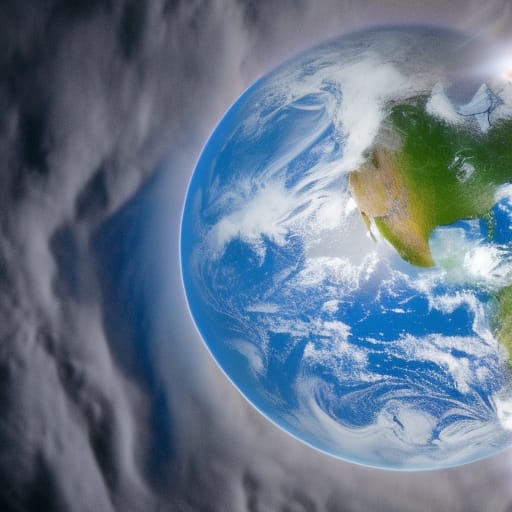Space: Earth

Earth is the third planet from the Sun and the only known planet in the universe to harbor life. It has many unique characteristics that make it suitable for supporting life as we know it. Here are the important aspects of Earth:
Distance and size: Earth is located about 149.6 million kilometers (93 million miles) from the Sun. It has a diameter of approximately 12,742 kilometers (7,918 miles) and is the largest of the four terrestrial planets in our solar system.
Composition: Earth is a terrestrial planet with a rocky surface composed mostly of silicate minerals. Its atmosphere is primarily made up of nitrogen (78%) and oxygen (21%), with trace amounts of other gases, including carbon dioxide and water vapor.
Orbital and rotation period: Earth takes 365.25 days to complete one orbit around the Sun, which defines the length of a year. Earth rotates on its axis once every 24 hours, creating the day-night cycle.
Temperature: Earth has a relatively moderate climate, with an average global surface temperature of approximately 15°C (59°F). This is due to its distance from the Sun and the greenhouse effect created by its atmosphere, which helps retain heat.
Surface features: Earth's surface is composed of diverse landscapes, including mountains, valleys, plains, deserts, and polar ice caps. It is also characterized by large bodies of water, which cover around 71% of the planet's surface, earning it the nickname "the Blue Planet."
Atmospheric pressure: Earth's average atmospheric pressure at sea level is 1013.25 hPa (hectopascals), which is suitable for sustaining life.
Magnetic field: Earth has a strong magnetic field generated by its molten iron core. This field, known as the magnetosphere, protects the planet from harmful solar radiation and helps maintain its atmosphere.
Life: Earth is the only known planet that supports life, with a diverse range of organisms inhabiting its many ecosystems. The conditions that support life include the presence of liquid water, a moderate climate, a suitable atmosphere, and the right combination of elements and organic molecules.
Moon: Earth has one natural satellite, the Moon, which orbits the planet every 27.3 days. The Moon is responsible for Earth's tides and has played a significant role in the evolution of life on Earth.
Human exploration: As Earth's inhabitants, humans have explored and settled on every continent. We have also ventured into space, with manned missions to the Moon and unmanned missions to other planets and celestial bodies.
Observing Earth: Earth can be observed from space using satellites, which provide valuable data about the planet's weather, climate, and surface features. The famous "Earthrise" and "Blue Marble" photographs taken during the Apollo missions have become iconic representations of our home planet.
Mythology: In many cultures, Earth is personified as a goddess, representing fertility and nature. In Greek mythology, the planet was associated with the goddess Gaia, while in Roman mythology, it was associated with Terra.